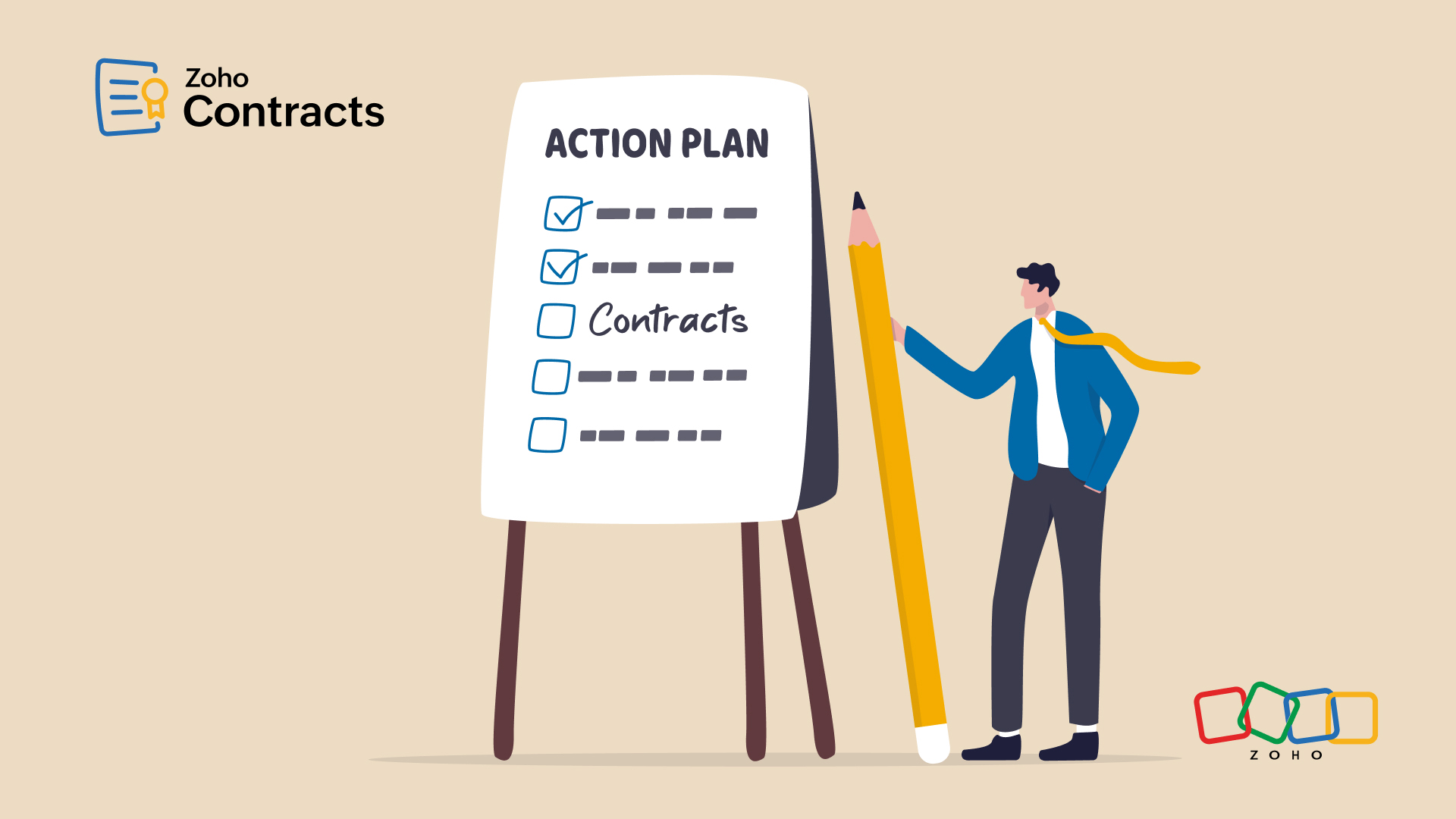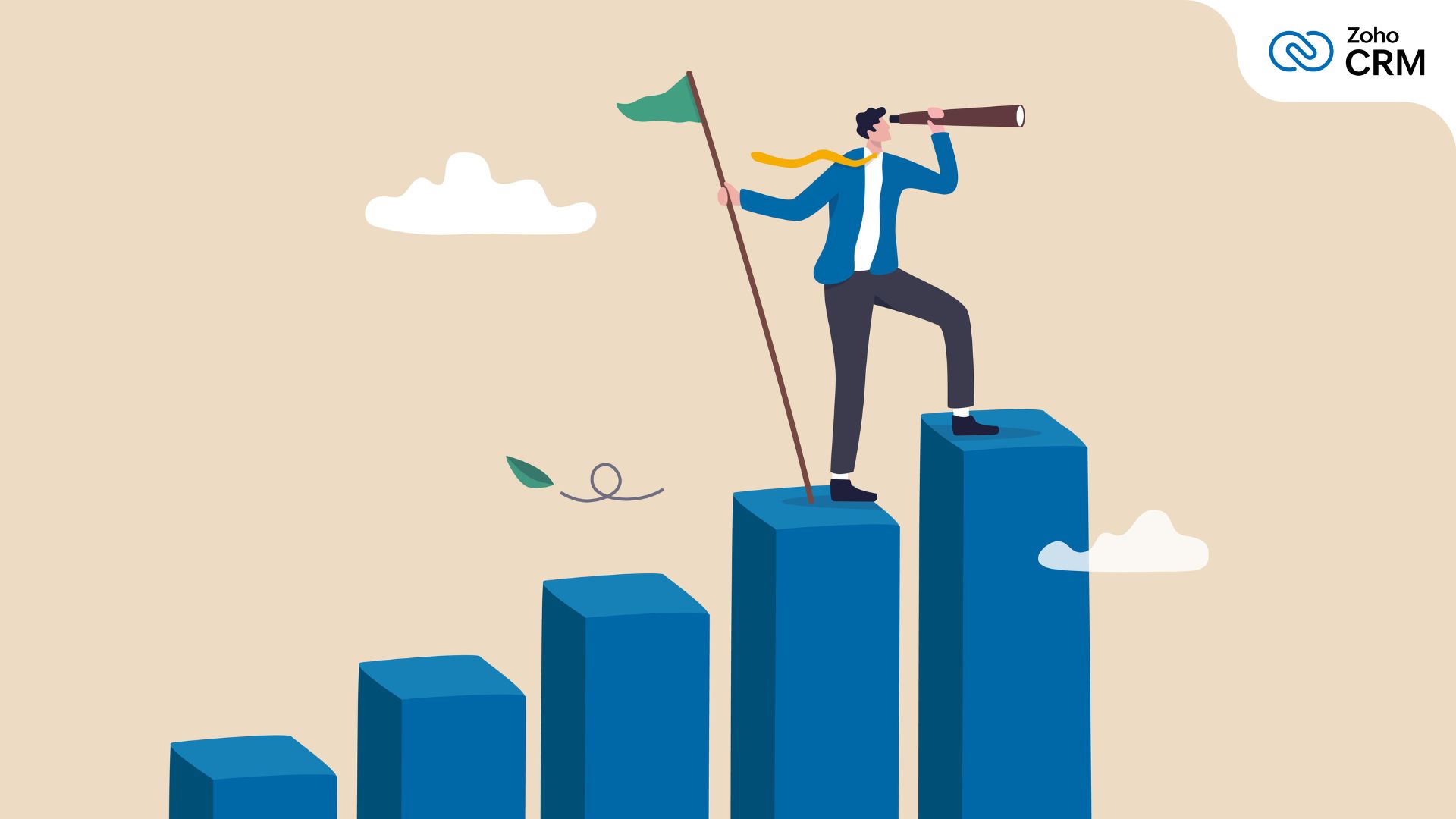How to get started with win-loss analysis
- Last Updated : August 7, 2023
- 1.3K Views
- 6 Min Read

Every opportunity you win gets you closer to reaching your monthly target and team goals, but you can't win every deal and one of the most difficult aspects of sales is identifying the reasons why a deal was lost. Companies often spend a huge amount of time analyzing lost deals and why they were lost. This is valuable, but it's just as important to identify what wins you deals. A detailed study to try to understand why a sales opportunity was won or lost is called a win-loss analysis. Let's look at key aspects of win-loss analysis to help you get started with it in your organization.
What is your goal?
Talking to your buyers can open up more opportunities for a stronger customer relationship. By interviewing your customers, you can uncover a lot of valuable insights into your service and competition, especially if the interviews are carried out immediately after the deal is closed (won or lost). Review these insights periodically and if this analysis continues for at least a year, you will probably find you can answer some important questions, such as:
1. How much do price, features, and service factor into the purchase decision?
2. What is it that convinces prospects to choose your competitors over you?
3. Are there any external influences that play a role in customers' decisions?
4. What are your company’s strengths for winning customers and retaining business?
5. Is it often a close call with another competitor?
On a broader scale, before you start a win-loss analysis, make sure to have a clear goal in mind. The win-loss analysis should not just be performed because it's part of the process you have to follow. Here are some reasons to do this study:
Product marketing: It is possible that your marketing message did not resonate well with your prospects. Looking at the buyer insights will help you learn more about your market share and how well your marketing messages are received by prospects. This will help you identify ways to improve your messaging and branding and modify your marketing strategy.
Product management: This is an important goal. Understanding the impact of your product in the market and learning about the product and solution gaps can give you great insights. Knowing where you are losing out to your competitors and what the specific requirements your customers have can help you create a good product roadmap for future developments.
Customer intelligence: With this goal, your focus should be on the buyer's experience of your product or service, product implementation, and your support and sales approach. This knowledge is useful for your sales team to align their messaging and focus on the strengths of the product.
Sales enablement: Feedback from buyers on their experience and journey through the sales cycle is very valuable for your salespeople. You will get an overview of how the sales team is performing and gain insights that you can use to improve the process and sales productivity.
A plan to get started
The cycle for a win-loss analysis includes planning the analysis itself, executing it, measuring the results and finally improving your process and strategy based on your findings.
Get input from important stakeholders
There may be various topics you want to ask questions about in the interview. For example, you could ask participants about:
a. The difference between you and your competitors
b. Your reputation in the market or within the industry
c. Any specific solution gaps that your product needs to fill
d. The people involved in decision making and the deciding factor
e. The training and product education for user adoption
The best course of action is to bring stakeholders from different department together - marketing, sales development, fulfilment, and customer onboarding, to make a list of the questions that they would like to ask or the information that they would like to find out from the buyers. You could then create a survey and send to the same stakeholders to help you finalize the list of questions to ensure you have captured all their requirements well and everyone is happy with the questions.
Review your resources
To get started, you will need a survey tool to conduct and collect survey data, a meeting tool to conduct online virtual meetings, and a CRM to store all the data collected in a single platform. Even better if all the buyer information on purchases, demography, past communications during the sales journey, etc. are stored in your CRM as a central repository along with the survey details and meeting transcripts. These tools will help you centralize the data collection so that you can access contextual information easily as the data is not scattered across different platforms.
Dedicate a team
Just as important as the tools are, putting together the right team to conduct the interviews is also essential. Companies often depend on their sales teams to make calls and find out why a deal was lost, but it doesn't have to always be the sales people who call. You can use a third-party agency to conduct a win-loss analysis, or keep it in house. Keeping it in-house reduces costs and you can use the people who know the most about your business and product—the people who work on it. The bottom line is, you should have a team who can talk to customers and make them feel comfortable sharing even their negative feedback. The team should be familiar with the buyer's culture and be able to interact in their native language to make them feel more comfortable in sharing their experiences.
If you decide to conduct your interviews in house, make sure you assign leadership to someone who can own the program and manage it independently, keeping the team neutral so that buyers are more comfortable and more likely to share honest feedback.
Identify your targets
The best way to know why a customer chose you over your competition is by asking them. They are the best source of competitive intelligence and talking to them will help you to understand where you stand in the market. The inclination to only interview prospects whose business you lost is natural, but it is important to talk to your actual customers, too. They can give you insight into how your company is doing with customer support, product implementation, features, demos, etc.
There are various ways you might want to target customers for interview, depending on your situation and overall goals. It's often a good idea to analyze your recent wins or losses, so you might want to look at the last three months, for example. That ensures you get all the information while it is still fresh in the customers' minds. But be careful, because calling too soon may not give you a clear overall picture of their experience if they are still in the middle of the implementation process. You might also want to look at deals where the buyer has been working with you for a while, as they have had more interactions with the sales team and will have networked with more people in your organization. These buyers will have more to share with you regarding their experiences with:
a. The demos they experienced
b. The implementation resources they were given
c. Any product solution areas that were customized for their industry
Share your findings, take action
For all this effort to be worthwhile, you need to be able make changes based on the results. Go through the transcripts and document your observations, paying attention to any common pattern that you notice or any trend that is worth giving attention to. For example:
1. If you find out that many clients did not like your pricing, it might be worth having discussions about pricing changes or other strategies you can implement to make your prices less off-putting.
2. If your results indicate that one particular product area is seen as weak among your customers, while you think that it is one of your strong areas, then you can use this information for sales enablement. You can make sure that sales teams are articulating the strengths of product features well and the messaging is clearer so the buyers fully understand the feature’s capabilities.
The final step in the win-loss analysis is to share the results of your study with the relevant people in your organization. This is essential to drive improvements in your business. Generate reports based on your findings and share them with the heads of departments in your company so they can take the necessary corrective actions.
After reading through all these steps, conducting a successful win-loss analysis might seem like a monumental task, but it doesn't need to be. The key is proper planning to succeed and a commitment to conducting this study periodically to yield better results for the company in the long run. And finally, the right tool is key to making sure you get all the data collected in a central repository for easy access.










